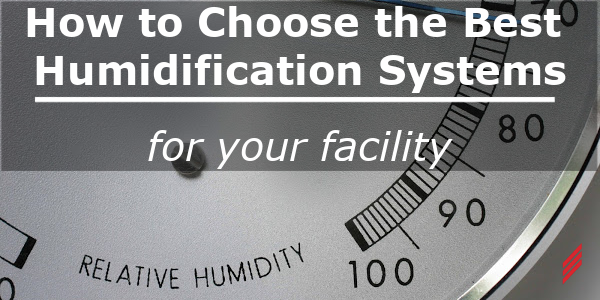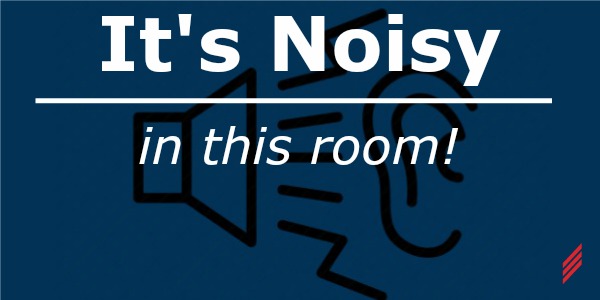How to Choose the Best Humidification Systems for Your Facility
by Brent Weigel, PhD on Sep 10, 2020 10:30:00 AM

The hot and humid days of summer evoke more thoughts of cool and dry air conditioning than of how best to humidify indoor air. Despite the weather outside our windows, now is the time to prepare our buildings for the cold and dry days of winter.
Most of our buildings have heating, cooling and ventilation systems, yet only a fraction have humidification systems. Many building operators and occupants do not yet regard low indoor air relative humidity as a concern significant enough to warrant investment in a humidification system, even though it has been known for decades in the scientific community that low indoor air relative humidity may contribute to undesirable outcomes for building operators and occupants, such as higher rates of infection by airborne-transmitted diseases and increased respiratory problems [http://www.ncbi.nlm.nih.gov/pmc/articles/PMC1474709/].
Even when humidification systems are clearly justified, and installed, building occupants and operators are often concerned about the risks of operating a humidification system. These risks include exposure to mold in supply air ductwork and exposure to boiler treatment chemicals in direct steam humidification systems. Overall, there is both considerable risk and considerable benefit from retrofitting the existing building stock with humidification systems.
For those that are convinced that a humidification system may be a worthwhile or necessary investment, there is the somewhat daunting task of determining the best or even an acceptable type of humidification system. Like many things in the HVAC design world, there are a variety of technologies available for humidification. This article aims to provide a succinct, tabulated summary of the different types of humidification systems available to building owners and MEP engineering teams.
To understand and assess any variety of options, it is often helpful to classify options into basic categories. Table 1 presents the main types/arrangements of humidifiers and the relative advantages and disadvantages for retrofitting an existing facility.
Table 1: Main Types/Arrangements of Humidifiers
|
Humidification Type / Arrangement |
Definition and Example |
Advantage |
Disadvantage |
|
Isothermal |
External thermal energy input to produce vapor and maintain a near-constant air temperature (e.g. heated pan humidifier) |
No increase in heat load of space. |
Heat source required (e.g. steam, hot water, electric). |
|
Adiabatic |
Space air or airflow provides energy for vaporization, resulting in a lower air temperature (e.g. ultrasonic humidifier) |
May offset cooling load, particularly in shoulder season. |
Increase in heat load of space and additional heating capacity may be required. |
|
In space / self-contained |
Vapor production and distribution within space, typically by a packaged unit. |
Can be configured and accessed near floor-level for operation, inspection, and maintenance. Packaged controls and appurtenances. |
Configuration/location may interfere with alterations to space layout. May require a large number of units for distribution and capacity. May require additional fan energy for distribution. |
|
In ductwork |
Vapor distribution via ductwork, with vapor production either within or outside of duct. |
Utilize existing fan and heating systems for distribution and reheat. No interference with space layout. |
Inspection and maintenance may require roof access, ladders, or lifts. Increased risk of unsupervised condensation, bacteria and mold in ductwork. |
With a basic understanding of the main types and arrangements of humidifiers, it is easier to understand and evaluate the many different types of humidification technologies. Table 2 presents the characteristics of a variety of commercially available humidification technologies. The table includes relative high or low ratings of the cost, maintenance, and energy consumption of each of the technologies.
Table 2: Characteristics of Humidification Technologies
|
Technology |
Type |
Location |
Heat |
Water |
Flush / Drain |
Cost |
Maint. |
Energy |
|
Heated pan humidifier |
Isothermal |
In space; In ductwork |
Steam |
Domestic DM/DI/RO |
Yes |
High |
Low |
High (steam) |
|
Notes |
High installation cost for supply steam, if not already available |
|||||||
|
Direct steam injection humidifier |
Isothermal |
In ductwork |
Steam |
none |
No |
High |
Low |
High (steam) |
|
Notes |
High installation cost for supply steam, if not already available. Boiler treatment chemicals must be safe for steam injection in supply air. |
|||||||
|
Electrode humidifier |
Isothermal |
In space; In ductwork |
Electric |
Domestic DM/DI/RO |
Yes |
Low |
Low |
High (electric) |
|
Electric resistance humidifier |
Isothermal |
In space; In ductwork |
Electric |
Domestic DM/DI/RO |
Yes |
Low |
Low |
High (electric) |
|
Ultrasonic humidifier |
Adiabatic, atomizing |
In space; In ductwork |
none |
DM/DI/RO |
Yes |
High |
Low |
Low (electric) |
|
Notes |
Replacement of disks every 10,000 hrs. Max capacity of app. 80 lbs/hr. |
|||||||
|
Compressed air nozzle humidifier |
Adiabatic, atomizing |
In space; In ductwork |
none |
Domestic DM/DI/RO |
No |
Low |
Low |
High (electric) |
|
Notes |
Produces high level of noise. High installation cost for compressed air, if not already available. Energy for compressed air service. |
|||||||
|
Pressurized water humidifier |
Adiabatic, atomizing |
In space; In ductwork |
none |
Domestic DM/DI/RO |
Yes (in duct) |
High |
Low |
Low (electric) |
|
Centrifugal atomizing humidifier |
Adiabatic, atomizing |
In space; In ductwork |
none |
Domestic DM/DI/RO |
Yes (in duct) |
Low |
Low |
Low |
|
Notes |
Produces high level of noise. Max capacity of app. 20 lbs/hr. |
|||||||
|
Rigid/wetted media humidifier |
Adiabatic, evaporative |
In space; In ductwork |
none |
Domestic DM/DI/RO |
Yes |
Low |
High |
Low |
|
Notes |
No risk of oversaturating the air. Low precision control of space relative humidity. Basin may harbor harmful bacteria or mold. |
|||||||
All humidifier types, except for direct steam, require water service: either domestic water, or DM/DI/RO (demineralized / deionized / reverse osmosis) water. DM/DI/RO water and associated water treatment systems are required for some, but not all, humidifier technologies. Water treatment can add significant first cost as well as operational cost, but can improve the operational performance of a humidification system. DM/DI/RO water can reduce maintenance intervals and/or reduce the amount of mineral fallout in the space. Utilization of softened water can reduce maintenance intervals (i.e. reduced scaling of humidifier components), but may increase the amount of mineral fallout. Systems requiring flushing and installed at floor-level should be located near a floor drain or sanitary connection.
Existing conditions and cost may forestall the installation of a particular type of humidification system in an existing facility. Nevertheless, with an understanding of the relative advantages and disadvantages of different humidification system types and technologies, a cost-effective humidification solution can be achieved.
About the author
Brent Weigel has left Hallam-ICS to pursue other endeavors, but his contributions to the company continue to be valued.
About Hallam-ICS
Hallam-ICS is an engineering and automation company that designs MEP systems for facilities and plants, engineers control and automation solutions, and ensures safety and regulatory compliance through arc flash studies, commissioning, and validation. Our offices are located in Massachusetts, Connecticut, New York, Vermont and North Carolina and our projects take us world-wide.
You May Also Like
These Related Stories

How to use the V-Model for Building Commissioning

TGMS Maintenance – How to Effectively Manage and Maintain Your System



Comments (4)